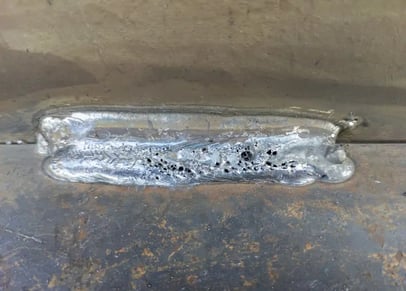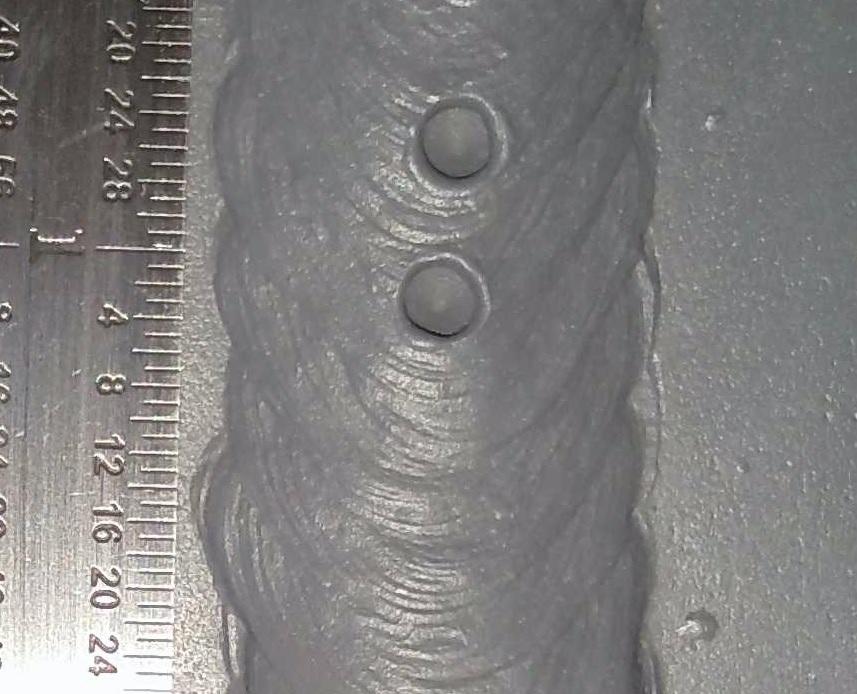What is Porosity in Welding: Secret Variables and Their Influence On Weld Top Quality
What is Porosity in Welding: Secret Variables and Their Influence On Weld Top Quality
Blog Article
Recognizing Porosity in Welding: Exploring Causes, Results, and Prevention Techniques
As professionals in the welding market are well aware, understanding the causes, effects, and avoidance strategies connected to porosity is vital for achieving durable and reputable welds. By diving into the origin triggers of porosity, analyzing its detrimental results on weld quality, and exploring reliable prevention methods, welders can improve their understanding and skills to produce high-quality welds constantly.
Typical Sources Of Porosity
Contamination, in the form of dirt, grease, or rust on the welding surface, develops gas pockets when heated, leading to porosity in the weld. Inappropriate shielding takes place when the protecting gas, commonly used in procedures like MIG and TIG welding, is incapable to completely shield the liquified weld swimming pool from responding with the bordering air, resulting in gas entrapment and succeeding porosity. In addition, poor gas protection, commonly due to inaccurate circulation prices or nozzle positioning, can leave components of the weld vulnerable, enabling porosity to develop.
Impacts on Weld Top Quality
The visibility of porosity in a weld can significantly compromise the overall quality and stability of the bonded joint. Porosity within a weld produces spaces or cavities that weaken the structure, making it much more susceptible to cracking, corrosion, and mechanical failure. These gaps serve as tension concentrators, lowering the load-bearing ability of the weld and boosting the chance of early failure under used stress. Furthermore, porosity can additionally offer as prospective sites for hydrogen entrapment, further worsening the destruction of the weld's mechanical residential or commercial properties.
In addition, porosity can hinder the effectiveness of non-destructive testing (NDT) techniques, making it challenging to detect various other flaws or interruptions within the weld. This can lead to significant security concerns, especially in vital applications where the structural stability of the bonded parts is extremely important.

Prevention Techniques Introduction
Provided the damaging effect of porosity on weld top quality, effective avoidance strategies are vital to keeping the architectural honesty of bonded joints. One of the primary avoidance techniques is comprehensive cleansing of the base materials prior to welding. Pollutants such as oil, oil, rust, and wetness can add to porosity, so ensuring a tidy work surface is vital. Proper storage of welding consumables in completely dry problems is also crucial to avoid dampness absorption, which can lead to gas entrapment throughout welding. In addition, choosing the appropriate welding specifications, such as voltage, existing, and travel speed, can help reduce the danger of porosity formation. Guaranteeing ample securing gas circulation and protection is an additional essential avoidance technique, as inadequate gas coverage can cause climatic contamination and porosity. Finally, appropriate welder training and certification are important for implementing safety nets efficiently and continually. By integrating these avoidance strategies into welding techniques, the event of porosity can be dramatically lowered, leading to more powerful and extra reputable bonded joints.
Value of Correct Protecting
Proper protecting in welding plays a vital duty in protecting against atmospheric contamination and making certain the honesty of welded joints. Protecting gases, such as argon, helium, or a combination of both, are generally used to safeguard the weld swimming pool from responding with aspects airborne like oxygen and nitrogen. When these reactive components enter into call with the warm weld pool, they can create porosity, leading to weak welds with decreased mechanical properties.

Poor securing can cause various problems like get redirected here porosity, spatter, and oxidation, jeopardizing the architectural honesty of the welded joint. Adhering to proper protecting methods is essential to create high-quality welds with minimal problems and guarantee the long life and dependability of the welded components.
Tracking and Control Approaches
How can welders efficiently check and control the welding procedure to make sure optimal outcomes and prevent flaws like porosity? By continuously monitoring these variables, welders can determine inconsistencies from the optimal conditions and make instant changes to avoid porosity development.

Furthermore, implementing correct training programs for welders is crucial for keeping an eye on and managing the welding procedure successfully. What is Porosity. Enlightening welders on the significance of preserving consistent specifications, such as correct gas securing and travel speed, can help avoid porosity issues. Normal analyses and qualifications can likewise my link ensure that welders are competent in monitoring and controlling welding processes
Furthermore, making use of automated welding systems can boost monitoring and control capacities. These systems can precisely manage welding criteria, reducing the chance of human error and guaranteeing consistent weld high quality. By incorporating advanced surveillance technologies, training programs, and automated systems, welders can properly monitor and regulate the welding procedure to lessen porosity defects and accomplish useful site premium welds.
Conclusion

Report this page